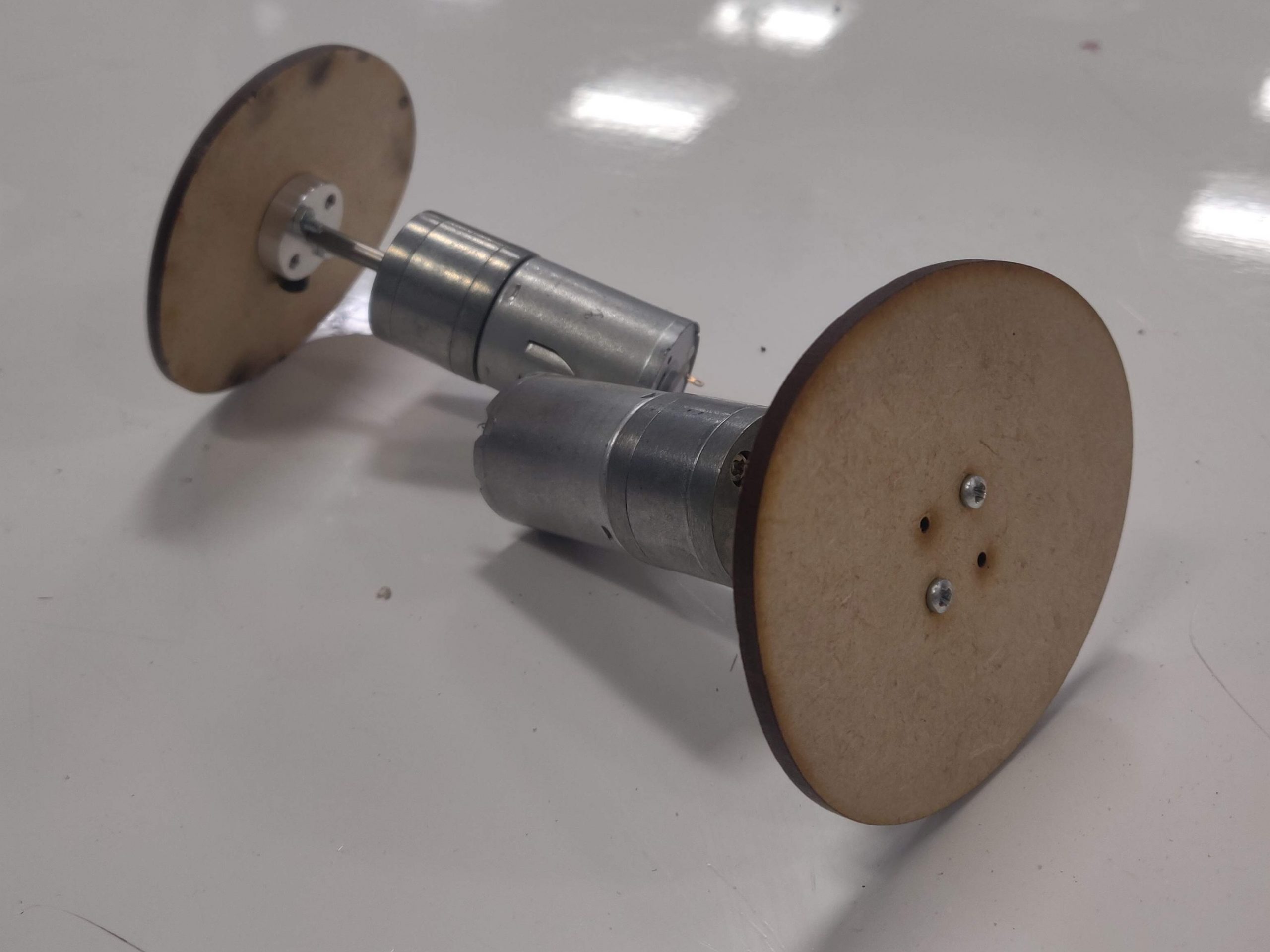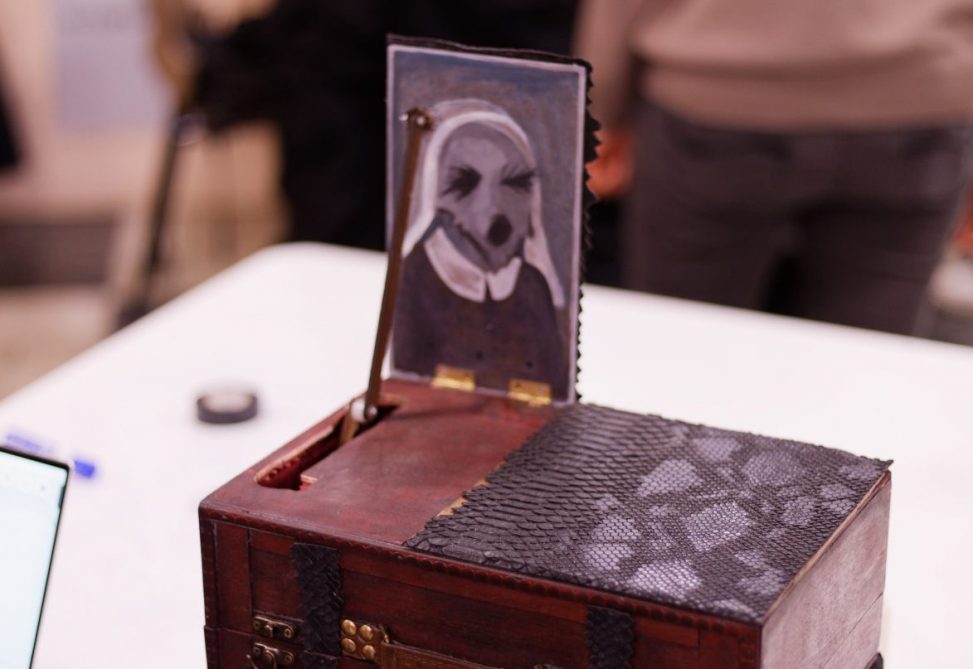By Ana Belen Cobos (acobos) and Sue Lee (suel2)
Narrative statement
The Scare-case is an interactive, travel-size version of the Fridge Scare, a common jump scare technique used in horror movies where audience members are scared after they expect.
The objectives of our performance were to create an interactive experience that controlled the emotions and expectations of the visitor. We achieved interaction by encouraging the visitor to open and close the suitcase’s lid. We attempted to control the visitor’s emotions and expectations in a Fridge-Scare-esque manner, by removing the fright when expected and delivering the fright when not.
Narrative description of experience
The suitcase begins closed and rattles in order to grab a visitor’s attention in both a visual and auditory way. Once the visitor is close enough, the rattling ceases, thus inviting the visitor to open the suitcase and see what spooky mysteries lie inside.
To the visitor’s surprise and relief, opening the suitcase reveals an empty interior and the lack of a scare. After convincing themselves that the experience has concluded, the visitor closes the suitcase lid in order to reset the suitcase for the next visitor.
As soon as the lid is closed, the false lid springs open as the suitcase begins to violently rattle once more! Hopefully, this elicits a jump scare from the visitor, given their lowered guard. After the scare concludes, the false lid slowly re-closes and the suitcase waits patiently for its next victim.
Course themes present in Scare-case
One theme in this course was that a robot was a machine that was “surprisingly animate.” We attempted to achieve this in our piece through the use of sensors and motors. More specifically, through the use of distance sensors, motion sensors, and motors, we were able to surprise visitors based on expected animation and unexpected animation.
The expected animation came in the initial rattling of the suitcase powered by the DC motors and triggered by the motion sensor. This rattling marks the beginning of the visitor’s experience with the machine. We’d categorize this animation as expected since there is a clear and easy-to-understand relationship between the motion sensor and the resulting rattling.
The unexpected animation came in the sudden opening of the false lid. This was an event not within the initial scope of the machine. We were able to take this surprising event and elevate the surprise even more by using sensors to detect when the lid was re-closed, and thus when the visitor was least likely to expect a new event.
Our sculpture demonstrates how lackluster animation of a robot can be wielded as a tool to lower one’s guard in order to later heighten the surprise of future animation.
Outcomes: successes? failures? lessons learned?
The most successful part of this project I think was creating some that was “surprisingly animate”. Movement in general can have varying degrees of apparent life or energy and something that moves and stops moving in relation to the people moving around it was a strong concept to hold onto. Where there could have been more refinement with more time, might have been the building and mechanics of the pop-up false lid. if it had a quality of movement closer to the joltiness of the “rattle” movement, it might have been a more cohesive piece.
The main issue I noticed as people approached the suitcase in the gallery, was that they didn’t know what to do with the suitcase. Ideally a piece does not need the creator standing right by it explaining and telling the viewer how it is meant to be experienced. To simplify, earlier in the process, we cut out the idea to have speakers and noises emit from the suitcase. Perhaps this may have been a good way for the piece itself to encourage people to actually open the suitcase.
Performance video
Citations
- This soft-close hinge served as inspiration for initial motor-controlled hinge prototype:
- Garth’s sample CircuitPython code for the Raspberry Pi Pico and various sensors/motors served as the foundation of our code:
- An example of a Fridge Scare from The Purge (2013):
Supporting technical documentations
Program source code
Mechanical CAD files
Laser-cut files for gears, false lid, and hinges.
https://drive.google.com/file/d/1Y5cURw3J6UZVCzGKslVZdzoijgcBHqmP/view?usp=sharing
Design element photographs



Group contributions
Sue:
- Designing and implementing all the code for the suitcase
- Assembling the hinge
- Calibrating and collecting marker values for sensors and motors
- Wiring all of the motors and sensors to the Raspberry Pi Pico
- Building the functional prototype of a false lid and hinge
- Other general assembly here and there, with a focus on function instead of fashion
Ana:
- Project concept, story boarding
- Laser cut pieces
- Aesthetic design and execution
- Rattle motors setup and wiring
- Some of the installation of motors and building
